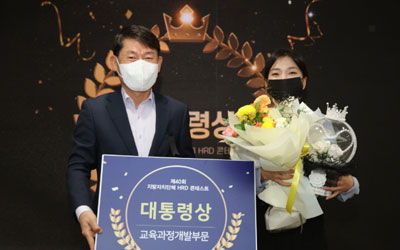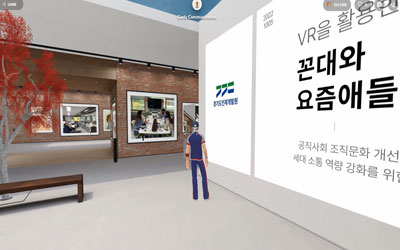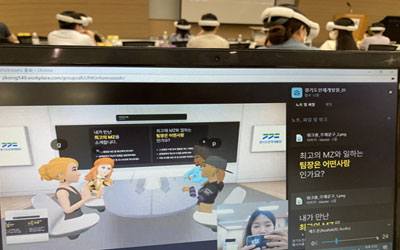Innovation of Organizational Culture Using Virtual Reality:
Interview with the Presidential Award Winner at the Local Government HRD Contest
We will learn about the presidential award winner program titled ‘Innovation of Organizational Culture Using Virtual Reality’ through an interview with Mr. Han Seung-wan, education research team manager of the Gyeonggi Provincial Human Resources Development Institute (GPHRDI)
Q. How do you feel about being selected as the presidential award winner in the field of curriculum development?

Q. Please give a brief introduction to the curriculum.
A. It is an intensive and immersed version of conventional communication development program using a digital communication platform ‘VR’ to share candid ideas and real stories inside your heart.Q. What did you focus on when developing the curriculum?

A. Instead of using the existing, well-developed programs from external channels or inviting popular lecturers form somewhere else, we decided to have first-hand experience, create modules one by one, and make improvement gradually. By going through this process repeatedly, we wanted to accumulate internal education and training data that is most relevant to us and obtain capabilities.
In an attempt to find interesting topics and create engaging content, team members read the book ‘A public official born in 1990 is coming’ and discussed their thoughts and feelings. At the same time, we collected and studied several relevant cases and examples from the internal anonymous bulletin boards and e-learning materials to develop contents that our learners can deeply relate to.
Against this backdrop, we gave up the old way of teaching: Instead of just giving a clear definition of communication and telling learners how to communicate, we decided to capture stories that learners can easily relate to as a video, watch it with them, and listen to their thoughts and feelings. In doing so, learners naturally reflected on the differences of opinions as they were exposed to the diverse perspectives of other people. That was how we lowered psychological barriers that had somewhat hindered active communication among people.
In the process, sharing of candid opinions and voluntary participation by learners was key.

To improve the effectiveness and ensure smooth management of VR training, team members learned how to set up and operate VR equipment from the instructor and tried the VR contents. This helped team members to come up with better ideas and strengthen their bond with the instructor. In fact, with the deepened understanding and excellet relationship with lecturers, GGHI staff was able to participate as an assistant instructor in the VR training program.
If a program developer experiences his/her program ahead and identify any points that are relatable to the learners, probability of success will be very high. In our case, through the process of course development, my team members’ (including myself) communication and digital competency was highly enhanced. In this context, I feel like our case has become the exemplary model of ‘workplace learning (workflow learning),’ which is a popular trend in the HRD sector.
Q. What do you expect from this curriculum in the future?

Since innovation in organizational culture cannot be accomplished with just one-time training, we plan to continue to run this training program next year and apply it to various training opportunities.
So far, training using VR technology has been perceived to be expensive because it requires exclusive simulation-oriented content, such as flight, fire detection, and crime response.
Our program, on the other hand, could change such perception and help people realize that we can provide a highly immersive training utilizing commercialized contents with careful selection.
I hope our attempt will be the starting point of developing an outstanding curriculum. We ourselves will continue to identify any emerging digital communication platforms and try to apply them to our training and education programs.
Thank you.
Han Seung-wan
Education Research Team Manager,
Capability Development Support Division,
Gyeonggi Provincial Human Resources Development Institute
82-(0)31-8008-8930, hswan@gg.go.kr